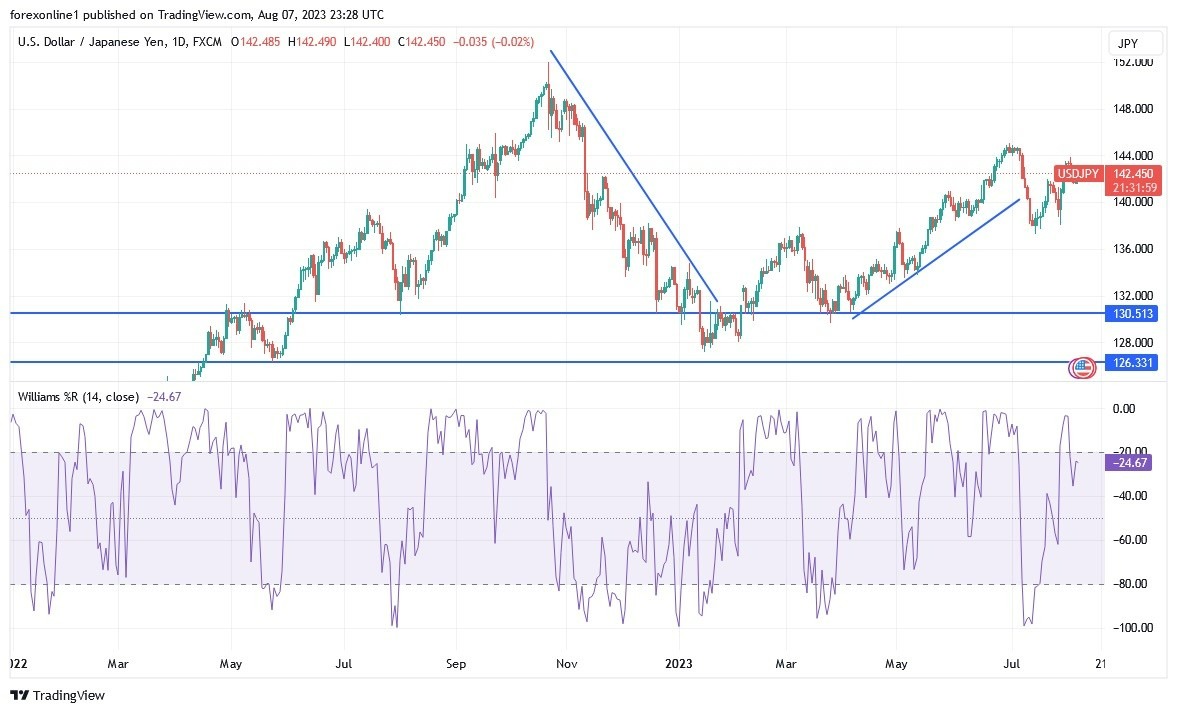- The price of the USD/JPY currency pair returned to its broader ascending path, stable around the 143.40 resistance at the time of writing, and yesterday it tested the support at 141.51.
- The Japanese yen retreated against the rest of the other major currencies, in the wake of the Bank of Japan's sudden adjustment to the control program in the yield curve, a fact that will not go unnoticed by central bank officials after BoJ Governor Kazuo Ueda took the unusual step of recognizing that currency issues were factored into policy decisions.
Top Forex Brokers
Ueda surprised many BOJ watchers last month at a press conference after a policy meeting, saying that forex exchange rate volatility was a factor that prompted the BOJ to allow 10-year yields to rise beyond 0.5%. Accordingly, analysts said that this position appears to contradict previous communications from the Bank of Japan, which sought to confirm that currency policy falls entirely within the competence of the Ministry of Finance. The Bank usually says that it only cares about any impact that moves in the yen might have on the economy and inflation.
The question now is whether the BoJ's policy decisions might be affected more by currency movements.
Despite Ueda's warning, the Japanese currency fell to as low as 143.89 per dollar last week, a weakness spurred by a rally in US Treasury yields after rating agency Fitch lowered its rating of US credit.
Commenting on this, Daisuke Karakama, chief market economist at Mizuho Bank in Tokyo, said that “I think many people took his remarks as a warning of a weak yen.” “But by citing the currency as a factor, Ueda may increase the possibility that the market will go on the offensive towards a weaker yen. The market may test how much weakness in the Japanese yen the Bank of Japan will tolerate.”
The Bank of Japan said last month that it would control 10-year yields "more flexibly", by allowing fluctuations from 0.5% and offering to buy government bonds at 1% each business day, effectively creating a higher ceiling. In his post-meeting press conference, Ueda cited YCC's side effects of currency volatility as one of the reasons for revising the program. Reiterating the standard assertion that the Bank of Japan does not target exchange rates, Ueda added that "in the context of the side effects of the YCC, and our need to smooth out the volatility of financial markets, currency volatility was factored into today's move."
Shinichi Uchida, Odia's right-hand man, also stressed the point at a press conference last week by saying that volatility in the forex currency market was an "important element" that led to the policy decision. While such comments could serve as a warning to market participants, they could also spur speculation of further policy change if the yen continues to weaken.
While the forex market is still making sense of the somewhat complex BoJ policy, the direction of the yen depends on how the BoJ operates its bond market operations and where yields settle. In Japan, the Ministry of Finance is responsible for foreign exchange rates and any currency intervention is decided by the Minister of Finance. The Bank of Japan performs this procedure on behalf of the Ministry. And after last fall's closely watched interventions to support the yen, significant weakness is likely to spur further speculation of further action from the authorities.
USD/JPY Technical Outlook
The current performance confirms our view that the continuation of the discrepancy between the aggressive policy of the US Federal Reserve and the Bank of Japan, which has negative interest rates, will ensure that the bulls control the performance of the USD/JPY currency pair in the coming period.
According to the performance on the daily chart below, the general direction of the currency pair is still bullish, and the support level at 138.70 will remain the most important for the pair's direction to turn bearish. Currently, the closest resistance levels for the currency pair are 143.55, 144.60, and 146.00, respectively.

Ready to trade our Forex daily forecast? We’ve shortlisted the best FX trading platform in the industry for you.
